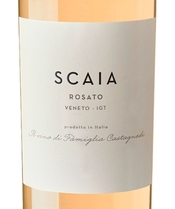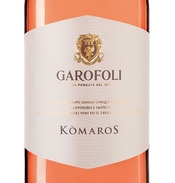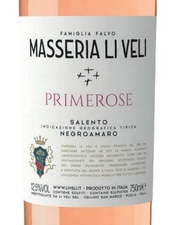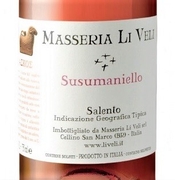In Scene Two of the first act of my wine career, when I represented several Italian wine producers, I pitched a Sangiovese Rosato from the Romagna region to potential U.S. buyers. Sangiovese makes an exceptional rosé wine, the producer explained, because the wine can still taste fresh in its second year. But there was no market for rosé wines 35 years ago, any more than there was a market for Prosecco, my other flop. Time has changed that reality both for rosés and for Prosecco.
Wine producers all through Italy make rosé versions of their red wines, using their local red grapes. Because Italy boasts so very many native grape varieties, the possibilities for rosato are almost endless. Even if the predominant style of these wines is light and easy-drinking rather than thought-provoking, Italian rosé is an interesting segment of wine for wine drinkers to explore.
I recently compared four rosés from four different Italian grape varieties grown in three different regions. My two favorites were from the Veneto (Rondinella grape) and Marche (Montepulciano grape).
 The 2020 Scaia (pronounced sky-ah) Rondinella Rosato, IGT Veneto ($14), is a dry, crisp, medium-bodied wine with moderately pronounced flavors of red cherry and orange peel, and a distinctive minerally note. Although its color is the palest of the four wines, the wine has a solid presence in the mouth. Because the wine’s acidity is high, you are likely not to perceive the 8 grams of residual sugar, except maybe as a fluidity of texture. Scaia is an off-shoot of the Valpolicella producer, Tenuta Sant’Antonio.
The 2020 Scaia (pronounced sky-ah) Rondinella Rosato, IGT Veneto ($14), is a dry, crisp, medium-bodied wine with moderately pronounced flavors of red cherry and orange peel, and a distinctive minerally note. Although its color is the palest of the four wines, the wine has a solid presence in the mouth. Because the wine’s acidity is high, you are likely not to perceive the 8 grams of residual sugar, except maybe as a fluidity of texture. Scaia is an off-shoot of the Valpolicella producer, Tenuta Sant’Antonio.
This wine might very well be the first solo Rondinella that I have tasted. The grape is widely used in the production of Valpolicella, where it is blended with Corvina and Corvinone. Producers regard it as a reliable grape that’s useful in producing dried-fruit styles such as Recioto. Textbooks claim that the wines can be simple. In the present circumstances, simplicity is not a weakness.
 Garofoli, an excellent producer of Verdicchio, calls its Montepulciano Rosato “Komaros,” and classifies it as Marche IGT. The Montepulcinao grape is best known in neighboring Abruzzo — where the Cerasuolo d’Abruzzo DOC is one of Italy’s classic rosé wines, sometimes as deep as a light red — but the grape is also Marche’s best red variety, often blended with Sangiovese. Rich red Montepulciano wines can be high in tannin, but rosato winemaking involves so little skin exposure that tannin is a non-issue, and the pale color of Garofoli’s Rosato indicates minor maceration, if any. The winery harvests the grapes for its rosé early, while acidity is high.
Garofoli, an excellent producer of Verdicchio, calls its Montepulciano Rosato “Komaros,” and classifies it as Marche IGT. The Montepulcinao grape is best known in neighboring Abruzzo — where the Cerasuolo d’Abruzzo DOC is one of Italy’s classic rosé wines, sometimes as deep as a light red — but the grape is also Marche’s best red variety, often blended with Sangiovese. Rich red Montepulciano wines can be high in tannin, but rosato winemaking involves so little skin exposure that tannin is a non-issue, and the pale color of Garofoli’s Rosato indicates minor maceration, if any. The winery harvests the grapes for its rosé early, while acidity is high.
The 2020 Garofoli “Komaros” Montepulciano Rosato ($14) is fairly dry and light medium-bodied, with slightly creamy texture. This is one of the most flavorful of the four rosatos I tasted, unlike the Scaia Rondinella, in which structure prevails. The flavors here suggest red cherry and other red fruits, including a hint of raspberry, and also a savory mineral note. Here the residual sweetness is only 4 to 5 grams, but not bone dry, and the wine’s fruitiness creates an impression of some palate richness.
Negroamaro, Puglia’s signature red grape (along with Primitivo) is made in a variety of styles, including a rosato version, which is popular locally. The grape brings good color to its wines, a fairly deep orangey pink in the case of Negroamaro rosato.
 The 2020 Masseria Li Veli “Primerose” Negroamaro Rosato, IGT Salento ($13), was the deepest of my four rosés and the heartiest in style. Its aromas and flavors suggest dark plum and black cherry but with a heady floral whiff; the wine is dry and nearly full-bodied, with a somewhat creamy texture and a pleasant, gentle, tannin element that nicely balances the ripeness of the fruit. This would be a good choice for those who want a rosé with flavor richness and a real presence in their mouths. For casual drinking, I can even imagine — dare I say? — dropping an ice cube into a glass of this wine.
The 2020 Masseria Li Veli “Primerose” Negroamaro Rosato, IGT Salento ($13), was the deepest of my four rosés and the heartiest in style. Its aromas and flavors suggest dark plum and black cherry but with a heady floral whiff; the wine is dry and nearly full-bodied, with a somewhat creamy texture and a pleasant, gentle, tannin element that nicely balances the ripeness of the fruit. This would be a good choice for those who want a rosé with flavor richness and a real presence in their mouths. For casual drinking, I can even imagine — dare I say? — dropping an ice cube into a glass of this wine.
 Li Veli also makes a 2020 Susumaniello Rosato called “Askos,” IGT Salento ($21). Susumaniello is an obscure red Puglian grape that was on the path to extinction until about 15 years ago. Li Veli makes both a red and a rosé Susumaniello.
Li Veli also makes a 2020 Susumaniello Rosato called “Askos,” IGT Salento ($21). Susumaniello is an obscure red Puglian grape that was on the path to extinction until about 15 years ago. Li Veli makes both a red and a rosé Susumaniello.
I perceive this to be the sweetest of the four wines I tasted, off-dry in my sweetness calibration. Roundness and richness in your mouth are the two key characteristics of this wine. It has fruity aromas and flavors that, unusually for a red wine, suggest peach. Just like the other Puglia rosato, it is a wine with weight and presence.
Serving temperature can be a thorny issue for these rosato wines. The two richer wines, from Puglia, taste best, to my taste, when they are very cold. Although much lighter, the Rondinella Rosato also is most enjoyable straight from the fridge. But the Montepulciano, from Scaia, expresses more nuance when it has sat in the glass at room temperature for five to ten minutes.
All these rosato wines are imported by Dalla Terra Winery Direct, a company that represents family-owned wineries from throughout Italy and has structured a direct distribution system that eliminates one tier of price mark-ups.
2020 Scaia Rondinella Rosato, IGT Veneto, 90 Points
2020 Garofoli “Komaros” Montepulciano Rosato, IGT Marche, 89 Points
2020 Masseria Li Veli “Primerose” Negroamaro Rosato, IGT Salento, 89 Points
2020 Masseria Li Veli “Askos” Susumaniello Rosato, IGT Salento, 88 Points
Read more of Mary Ewing-Mulligan’s Wine Column: "On My Table"
